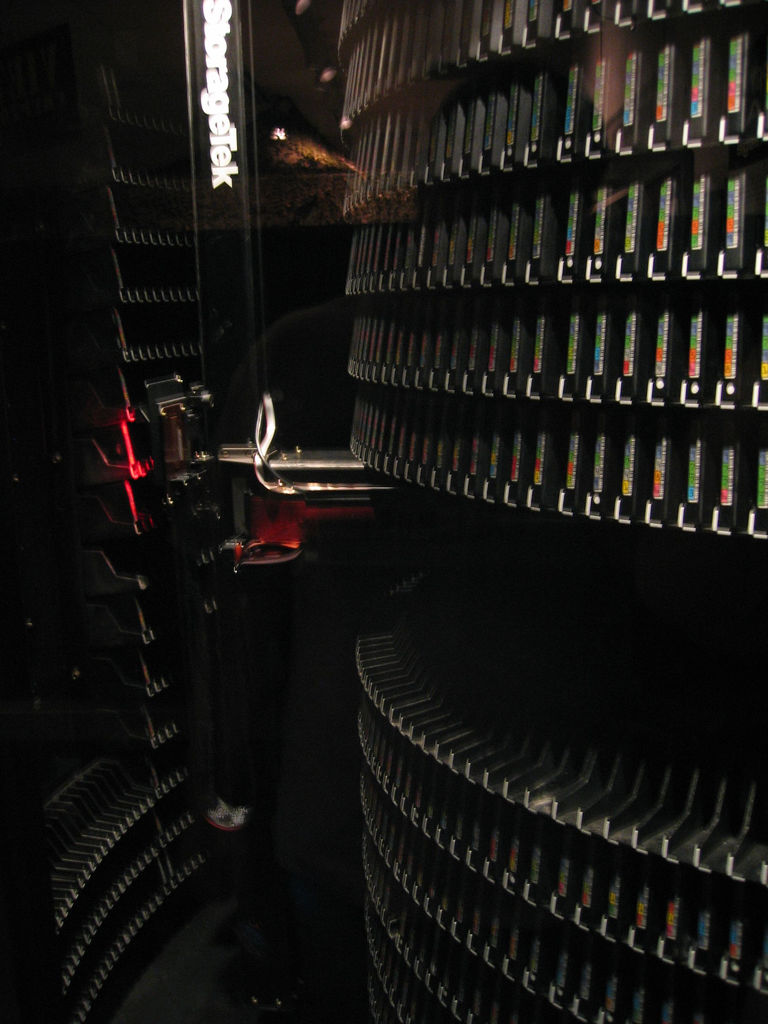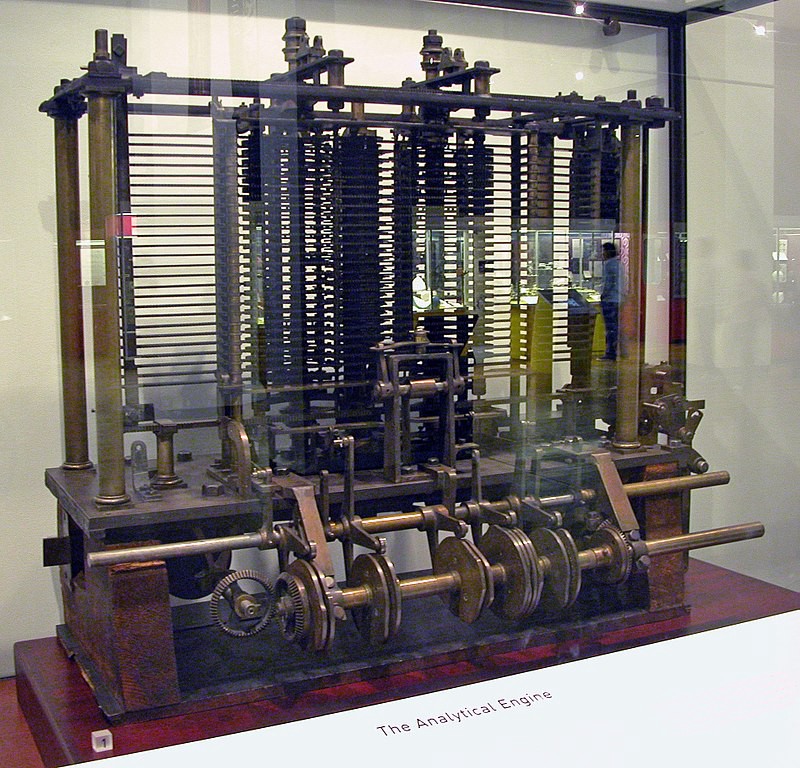A tape library is a storage device that contains one or more tape drives, a number of slots to hold tape cartridges, a barcode reader to identify tape cartridges, and an automated method for loading tapes. It is also sometimes referred to as a tape silo, tape robot, or tape jukebox. A tape library is not just the place where tapes that are not currently being held in a silo are kept, but it is also the name of the location. Tape libraries have the capacity to store millions upon millions of tapes.
The IBM 3850 Mass Storage System (MSS), which was introduced in 1974, is considered to be one of the early instances.
Design:
These devices have the capacity to store vast quantities of data, with capacities ranging from 20 terabytes[1] to 2.1 exabytes[2] of data as of the year 2016. This capacity is many thousands of times greater than what is possible with a normal hard disc and far above what can be accomplished with network-attached storage. The typical cost of entry-level solutions is around $10,000 USD,[3] although high-end systems can begin at as much as $200,000 USD[4,] and can cost well in excess of $1 million for a fully expanded and customised library. [3]
They are a cost-effective solution for big data storage, with a cost per gigabyte as low as 2 cents USD. [5] However, the trade-off for their larger capacity is their slower access time, which typically entails the mechanical manipulation of tapes. The amount of time it takes to access the data housed in a library might range anywhere from several seconds to several minutes.
Tape libraries are primarily put to use for the final stage of digital archiving as well as for the purpose of performing backups because of the sluggish sequential access and enormous capacity that they offer. One such example of the latter would be the comprehensive transaction record that an organisation keeps for the purposes of legal compliance or auditing. Another illustration of this would be hierarchical storage management (HSM), in which a tape library is utilised to store files from file systems that are only seldom accessed.
Software support:
The library industry makes available for purchase a variety of comprehensive management software programmes. Support for open-source projects includes the AMANDA and minimum mtx programmes.
Barcode labels:
It is normal practise for tape libraries to be equipped with the capacity to optically scan barcode labels that are affixed to each tape. This enables the libraries to automatically keep an inventory of which tapes are located where within the library. Labels with barcodes already printed on them can be purchased commercially, and individualised labels can be produced with software either purchased or obtained free of charge. The barcode label is usually included as a component of the tape label. The information required to uniquely identify the tape is typically recorded at the beginning of the medium.
Auto loaders:
The term “autoloader” is also sometimes used synonymously with “stacker,” which refers to a device in which the media are loaded necessarily in a sequential manner. [6] Autoloaders are smaller tape libraries that only have one drive. [7] The term “autoloader” is also sometimes used synonymously with “stacker” .[8]
Other kinds of autoloaders may read and write data to floppy discs as well as optical discs (such CDs and DVDs), depending on the model.
References:
- HP StorageWorks MSL2024 Tape Library – Overview & features
- Oracle “StorageTek SL8500 Modular Library System”.
- HP Small & Medium Business Online Store: HP StorageWorks MSL2024 Tape Libraries
- Cites cost as “From $195,830. (US)”
- “The Costs Of Storage”. Forbes.
- “SNIA Dictionary”. Storage Network Industry Association. Retrieved 2010-01-30.
Tape autoloader…[Storage System] A tape device that provides automated access to multiple tape cartridges, typically via a single tape drive.
- “Ten common backup/restore related questions”. Sun Microsystems, Inc. Retrieved 2010-01-30.
What is a stacker (autoloader) vs a jukebox?
“SNIA Dictionary”. Storage Network Industry Association. Retrieved 2010-01-30. Media
stacker…[Data Recovery] A robotic media handler in which media must be moved sequentially by the robot.










